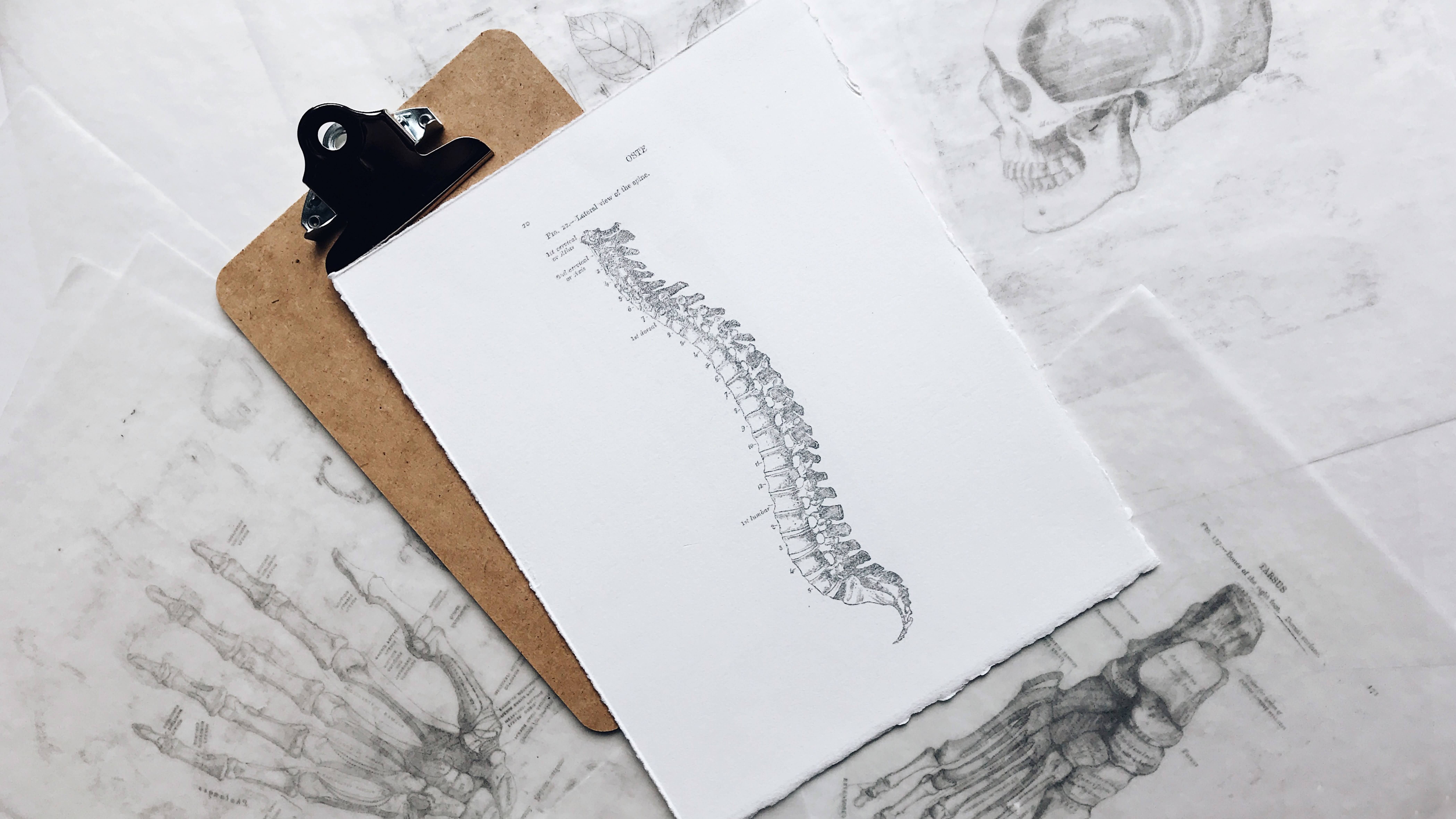Most people will experience a form of back pain in their lifetime; however, back pain can range from a common back spasm to more severe conditions (1). With our ever-increasing sedentary lifestyle, many experts claim that lower back pain is on the rise (2).
The spine consists of 4 regions:
- Cervical spine (neck) – 7 vertebrae
- Thoracic spine (mid-back) – 12 vertebrae
- Lumbar spine (Lower back) – 5 vertebrae
- Sacrum and Coccyx – Tail bone

Conditions
Some of the common back issues that present to the Chiropractic office include:
Lumbar sprain and strain
This type of pain accounts for 70% of all mechanical lower back pain. Typically, a muscle is pulled due to injury or one of the small joints – facet joints – is sprained. This injury is one of the most commonly seen injuries in emergency departments (3).
Scoliosis
Scoliosis is the sideward growth of the spine. Typically diagnosed as a child, however, most cases are mild, special care must be taken to ensure that the condition does not progress (4).
Degenerative Disc Disease
This condition is classified as degeneration of the intervertebral discs. Typically, this occurs in the older population but can also occur in younger patients due to previous spinal injuries. Symptoms include stiffness in the spine, pain and in some severe cases pinching the spinal nerves (5).
Lumbar disc herniation
A herniated disc is when the injured intervertebral disc bulges or moves past the intervertebral disc space. The disc can bulge enough to cause nerve compression. This can cause radiculopathy (nerve pain radiating down the limb) and severe lower back pain (6).
Neck sprain and strain
A neck sprain and strain is an injury to the cervical joints or the musculature around the neck. This can cause pain and even cervicogenic type headaches.
What to look out for
Red Flags help identify potentially serious conditions (7). They include:
- Features of Cauda Equina Syndrome (urinary retention, faecal incontinence, widespread neurological symptoms and signs in the lower limb)
- Severe worsening pain, especially at night or when lying down
- Significant trauma
- Weight loss, history of cancer, fever
Treatment
According to the Lancet papers, they have shown overwhelming evidence that the first-line approach to back pain should be drug-free, physical treatment. They also included that Chiropractic care is one such physical treatment in the first line of management of back pain (8).
Other modalities include:
- Ultrasound
- Myofascial dry needling
- Shockwave therapy
- Laser therapy
- Instrument assisted soft tissue manipulation
- Kinesiology and sport taping
- Electrotherapy
Regular exercise and stretches, a well-balanced diet and correct posture are all ways that you can manage and prevent your back pain. According to the New Zealand Ministry of Health website, you can seek relief such as paracetamol, gentle massage or use ice on your back to self-treat the pain (9).
Final thoughts
An integral part of treating back pain is understanding the mechanisms and the structures that have been injured. It is best is to seek advice and treatment from a health provider such as a registered Chiropractor. For more information about back pain or chiropractic, please feel free to contact any of the friendly chiropractors at Chirohealth in Hamilton. If in doubt, please phone the New Zealand health line at 0800 611 116
“Knowledge is Power”
Albert Einstein
References:
- Ministry of Health NZ. (n.d.). Back pain. [online] Available at: https://www.health.govt.nz/your-health/conditions-and-treatments/diseases-and-illnesses/back-pain [Accessed 29 Nov. 2020].
- The Good Body (2019). 34 Of The Most Surprising (And Alarming) Back Pain Statistics. [online] The Good Body. Available at: https://www.thegoodbody.com/back-pain-statistics/.
- Physiopedia. (2011). Lumbar Strain. [online] Available at: https://www.physio-pedia.com/Lumbar_Strain [Accessed 20 Oct. 2019].
- Mayo Clinic. (n.d.). Scoliosis – Symptoms and causes. [online] Available at: https://www.mayoclinic.org/diseases-conditions/scoliosis/symptoms-causes/syc-20350716#:~:text=Scoliosis%20is%20a%20sideways%20curvature.
- www.coloradospineinstitute.com. (n.d.). Explaining Spinal Disorders: Lumbar Degenerative Disc Disease. [online] Available at: https://www.coloradospineinstitute.com/conditions/lumbar-degenerative-disc-disease/ [Accessed 29 Nov. 2020].
- Physiopedia. (n.d.). Disc Herniation. [online] Available at: https://physio-pedia.com/Disc_Herniation [Accessed 29 Nov. 2020].
- New Zealand Acute Low Back Pain Guide. (n.d.). [online] Available at: https://www.healthnavigator.org.nz/media/1006/nz-acute-low-back-pain-guide-acc.pdf [Accessed 29 Nov. 2020].
- www.aecc.ac.uk. (2018). The Game-Changing Papers: The Lancet Publish Research Papers on Low Back Pain. [online] Available at: https://www.aecc.ac.uk/news/archive/the-game-changing-papers-the-lancet-publish-research-papers-on-low-back-pain/ [Accessed 30 Nov. 2020].
- Ministry of Health NZ. (n.d.). Headache. [online] Available at: https://www.health.govt.nz/your-health/conditions-and-treatments/diseases-and-illnesses/headache [Accessed 29 Nov. 2020].




